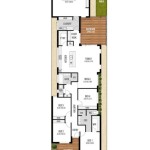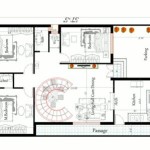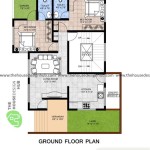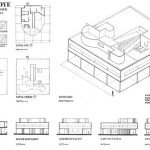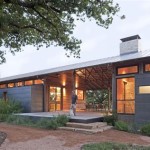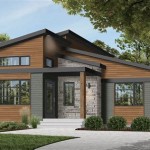Open Floor Plan House Decorating: Maximizing Space and Style
Open floor plans have gained immense popularity in modern home design, offering expansive living spaces that promote connectivity and a sense of spaciousness. However, decorating an open floor plan presents unique challenges. Successfully integrating distinct zones while maintaining a cohesive aesthetic requires careful planning and a thoughtful approach to furniture selection, color palettes, and accessory placement. This article explores key strategies for decorating open floor plan houses, focusing on maximizing functionality and enhancing visual appeal.
Defining Zones with Furniture Arrangement
One of the foundational principles of decorating an open floor plan is defining distinct zones for different activities. Without physical walls to delineate spaces, furniture arrangement becomes crucial in creating functional areas for living, dining, and working. Careful consideration should be given to traffic flow and sightlines when positioning furniture.
Sofas often serve as anchors in an open living area. Placing a large sectional or a pair of sofas facing each other can create a defined seating area. The back of a sofa can also act as a subtle divider between the living room and another zone, such as a dining area. Avoid pushing furniture directly against walls, as this can make the space feel less inviting and hinder flow. Instead, float furniture to create pathways and encourage conversation.
In an open dining area, a rug can help to visually define the space and ground the dining table and chairs. The size of the rug should be proportionate to the table, extending beyond the chairs even when they are pulled out. Consider using a round rug under a round table to further emphasize the circular shape and create a focal point.
For creating a home office nook within an open space, a bookshelf or a credenza can serve as a partition. These pieces provide storage and simultaneously delineate the workspace from the rest of the living area. A desk placed facing a wall can also create a sense of privacy and focus.
Employing area rugs effectively segregates distinct areas within the overarching open space. Utilizing rugs with varied patterns, textures, or colors establishes boundaries, marking each section – be it a living room, dining area, or workspace – as a separate entity. A common approach involves placing an expansive rug beneath the living room seating arrangement to centralize and visually contain the space. In the dining section, a corresponding rug beneath the table and chairs achieves a similar effect, delineating the dining area from the adjacent zones.
Strategic furniture positioning is equally important for directing movement through the open layout. Furniture should be arranged to facilitate easy navigation, refraining from obstructing pathways or creating bottlenecks. This can be accomplished by maintaining ample space between furniture pieces, allowing for seamless circulation.
Maintaining Cohesion Through Color and Texture
While defining zones is essential, maintaining a cohesive aesthetic throughout the open floor plan is equally important. A consistent color palette and the strategic use of textures can tie the various areas together, creating a harmonious and visually appealing space. It is recommended to select a dominant color scheme and incorporate accent colors that complement the primary hues.
Using different shades of the same color throughout the open space can create a sense of unity. For example, a living room might feature a light gray sofa with darker gray accent pillows, while the dining area incorporates gray in a patterned rug and artwork. This approach allows for subtle variations in color while maintaining a consistent thread.
Textures play a vital role in adding depth and visual interest to an open floor plan. Incorporating a variety of textures, such as wood, metal, fabric, and glass, can create a more dynamic and engaging space. A textured throw blanket on a sofa, a woven rug in the dining area, or metallic accents in lighting fixtures can all contribute to a richer sensory experience.
Consistent application of a limited number of materials and finishes is essential to foster cohesion. The choice of flooring, for example, can exert significant influence on the overall aesthetic of an open floor plan. Maintaining uniform flooring material throughout the space, such as hardwood or tile, establishes a sense of unity. Alternatively, strategically deploying contrasting flooring materials to demarcate specific zones, like transitioning from hardwood in the living area to tile in the kitchen, can augment visual interest while upholding cohesion through color and texture.
The implementation of a cohesive color palette is pivotal in harmonizing diverse sections of an open floor plan. Choosing a limited range of colors and maintaining consistency across the space creates a seamless transition from one area to another. Employing varying shades of the same color can introduce dynamism while adhering to the underlying color scheme. For instance, incorporating lighter shades of blue in the living room, such as on the walls or upholstery, and darker tones of blue in the dining area, perhaps in the form of artwork or dinnerware, can achieve a sophisticated variation within the established color scheme.
Repeating patterns throughout the space, through textiles, wallpaper, or art, can visually link the different zones. This could be as subtle as introducing the same geometric pattern in throw pillows in the living room and in the window treatment in the dining area or as bold as using a similar floral print on a statement chair and a large-scale wallpaper in an entryway that is visible from the open space. This visual echo creates a subconscious connection between the various elements of the room and contributes to the overall sense of unity.
Leveraging Lighting for Ambiance and Function
Lighting is a critical element in any interior design project, but it is particularly important in open floor plans. Strategically placed lighting fixtures can enhance ambiance, define zones, and highlight architectural features. A well-lit open space will feel inviting and functional, allowing for a variety of activities to take place throughout the day and night.
Layering light sources is essential in an open floor plan. This involves combining ambient lighting (general illumination), task lighting (focused light for specific activities), and accent lighting (highlighting decorative elements). Ambient lighting can be provided by recessed lighting, chandeliers, or pendant lights. Task lighting can include table lamps for reading, floor lamps for illuminating seating areas, and under-cabinet lighting for kitchen countertops. Accent lighting can be used to highlight artwork, architectural details, or furniture.
Dimmers are invaluable for creating different moods and adjusting the level of lighting to suit the activity. Dimmers allow for a brighter setting for daytime activities and a softer, more intimate setting for evenings. They also help to conserve energy and extend the lifespan of light bulbs.
The judicious employment of natural light is paramount in open floor layouts. Strategically positioning furniture to harness sunlight and refraining from obstructing windows with heavy drapery can significantly brighten the space. Mirrors can be strategically placed to amplify and reflect natural light, thereby enhancing the sense of spaciousness and openness within the room.
The deployment of recessed lighting can provide uniform illumination throughout the open floor plan. These light fixtures, discreetly integrated into the ceiling, offer general illumination without the intrusiveness of pendant lights or chandeliers. Recessed lighting is particularly effective in areas where overhead space is limited or where a minimalist aesthetic is desired.
Pendant lights and chandeliers serve as focal points, adding visual interest and defining distinct areas within the open space. Hanging a chandelier above the dining table or positioning pendant lights above a kitchen island creates a sense of drama and sophistication. Select lighting fixtures that complement the overall design aesthetic of the space, reinforcing the chosen style and color palette.
Strategic use of task lighting proves crucial for illuminating specific areas dedicated to particular activities. Table lamps are essential for providing focused light for reading or working in the living room, while floor lamps offer illumination for seating arrangements. In the kitchen, under-cabinet lighting ensures ample visibility for food preparation tasks, enhancing both safety and functionality.
Ultimately, decorating an open floor plan house requires careful planning and a thoughtful approach. By defining zones with furniture arrangement, maintaining cohesion through color and texture, and leveraging lighting for ambiance and function, one can create a stylish and functional living space that maximizes both beauty and practicality. The key lies in understanding the unique characteristics of the open floor plan and tailoring the design to suit the specific needs and preferences of the homeowner.

30 Gorgeous Open Floor Plan Ideas How To Design Concept Spaces

How To Decorate Your Open Floor Plan Like A Pro Interior Design Home Staging Jacksonville Fl Interiors Revitalized

How To Decorate Your Open Floor Plan Christopher Companies

How Do You Decorate A Large Open Floor Plan Houseplans Blog Com

A Few Of Our Favorite Decorating Tips For Open Floor Plans Janet Brooks Design

Pros And Cons Of An Open Concept Floor Plan Generation Homes Nw

Renovate Or New Custom Home Guide To Achieve Open Floor Plan
:strip_icc()/open-floor-plan-design-ideas-13-proem-studio-white-oak-3-57715775317c4b2abc88a4cefa6f06b7.jpeg?strip=all)
22 Open Floor Plan Decorating Ideas Straight From Designers

Open Floor Plan Decorating

18 Great Room Ideas Open Floor Plan Decorating Tips

